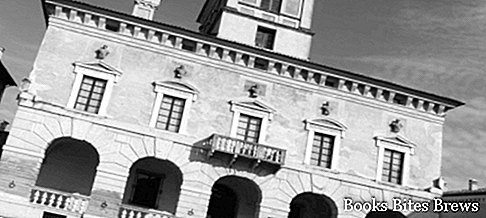What to see in Sabbioneta, an itinerary including the main monuments and places of interest, including Piazza d'armi, Palazzo Ducale, Teatro all'’ Antica, Duomo Santa Maria Assunta.
Tourist information
A town in Lombardy in the province of Mantua, Sabbioneta is located in the center of the Po valley, between the left bank of the Po river and the lower course of the Oglio.
The small fortified city was conceived, designed and built, between 1556 and 1591, by Vespasiano Gonzaga, according to the most advanced urban theories of the time, in the light of the Vitruvian canons and the precepts of military engineering, with the collaboration of famous architects and artists such as Girolamo Cattaneo, Bernardino Panizzari, Vincenzo Scamozzi, Bernardino Campi, Giulio Romano and others.
It represents an extraordinary example of an ideal Renaissance city, which expresses the humanistic concept of the world that Duke Vespasiano Gonzaga had in an architectural form.
Sabbioneta, declared a World Heritage Site by Unesco, is completely surrounded by irregular hexagonal walls with six bastions and two main access gates opposite each other, Porta Vittoria and Porta Imperiale.
The two access doors are connected to each other by the main road axis, the ancient Giulia road, which in the vicinity of the doors is broken and varied in size, so as not to make the rows of houses appear parallel to the sides, so as to apparently make the city bigger than it really is.
The major city monuments gravitate around the two main squares, Piazza d’Armi and Piazza Ducale.
Piazza d’Armi was the center of the Duke's private life, where the Palazzo del Giardino, the home of Vespasiano, is located, from which stands the Galleria degli Antichi which housed his private collections.
Piazza Ducale was instead the center of Vespasiano Gonzaga's public life and citizenship, where the market was also held.
What see
Piazza Ducale overlooks the Palazzo Ducale or Palazzo Grande, the seat of political and administrative commitments and the Official Palace of Representation, the Palazzo della Ragione, where there were prisons, various offices and the home of the Vicar of the Duke, and the Cathedral of Santa Maria Assunta, with an elegant marble dichromy facade and the beautiful chapel dedicated to the Blessed Sacrament, rebuilt and decorated in 1768 by Antonio Galli Bibiena.
Between the two squares stands the Teatro all'Antica, a masterpiece by the Vicenza architect Vincenzo Scamozzi.
Recommended readings- Lombardy: Sunday day trips
- Varese (Lombardy): what to see
- Valcamonica (Lombardy): what to see and rock carvings
- Pavia (Lombardy): what to see
- Lake Iseo (Lombardy): what to see in 1 day
Near the Duomo, to which it is connected through the sacristies, stands the small oratory of San Rocco and San Sebastiano, a building dating back to the seventeenth century, with the internal decoration redone in the second half of the eighteenth century.
Near the Oratory is the Renaissance palace which belonged to Salomone Foà, where the Synagogue was built in 1824, following the donation, by the ancient owner, of some rooms in the palace.
This place of worship, which can be visited, testifies to the presence of a small and active Jewish community that settled in Sabbioneta in the mid-sixteenth century, which has gone extinct over time due to the transfer of its components to other cities.
In Piazza Libreria Grande there is the Church of Santa Maria Incoronata, built as a private temple, on the site where the Church of San Niccolò once stood, demolished by Vespasiano Gonzaga.
The octagonal structure is inspired by fifteenth-century Lombard models of Bramante's origin, while the internal decorations, from the second half of the eighteenth century, are the work of students of the Antonio Galli da Bibiena school.
Inside, the mausoleum of Vespasiano is kept, the funeral monument built in 1592 by Giovan Battista della Porta in very rare polychrome marble, at the center of which is the bronze statue of Prince Vespasiano Gonzaga, the work of Leone Leoni.




